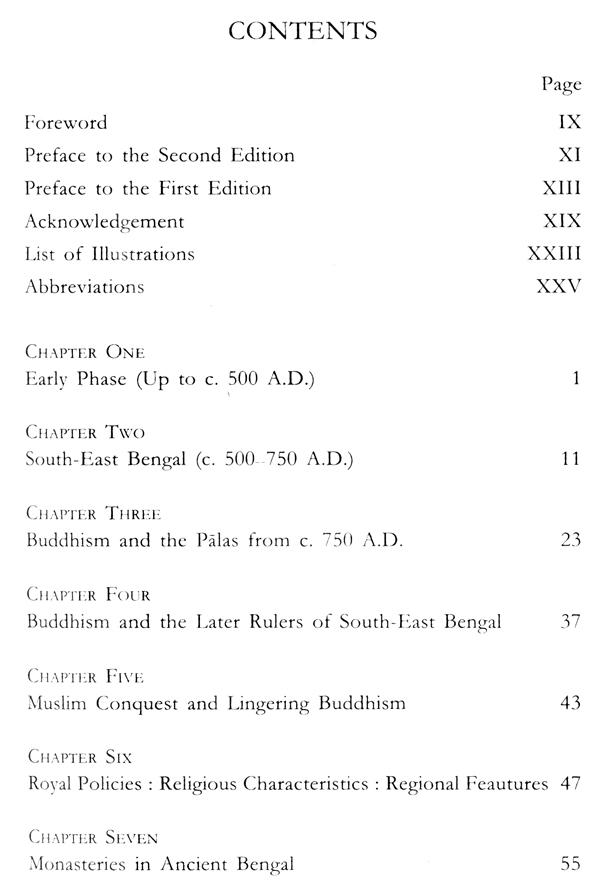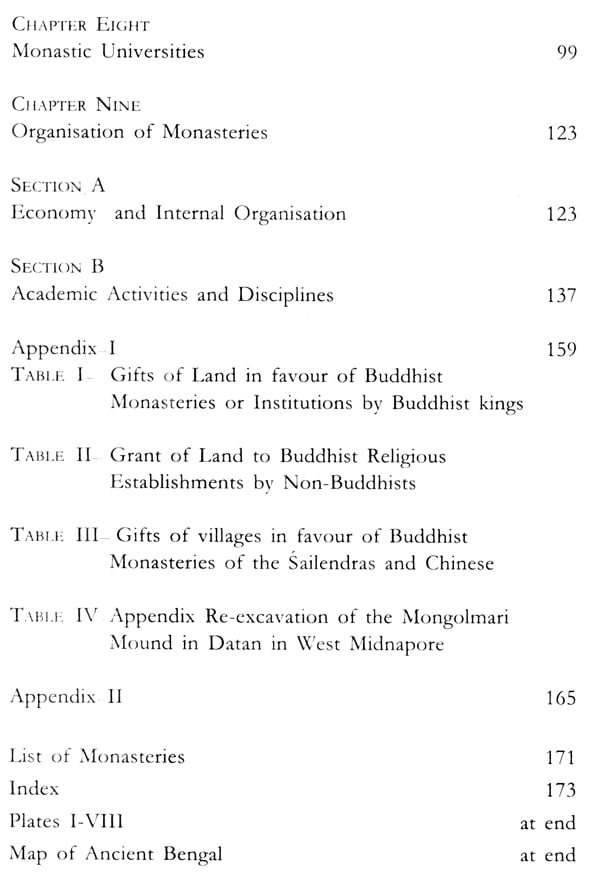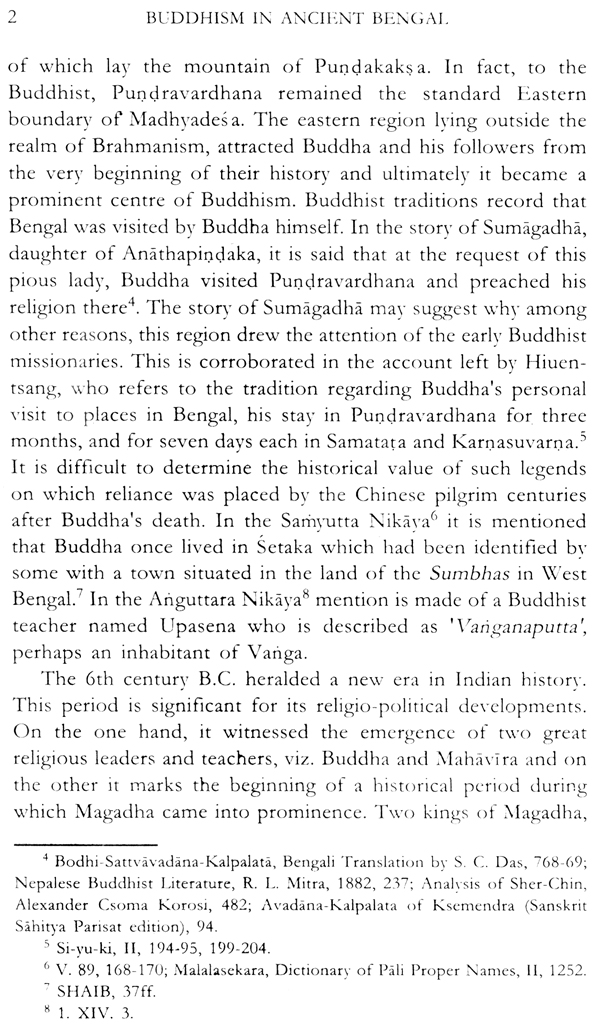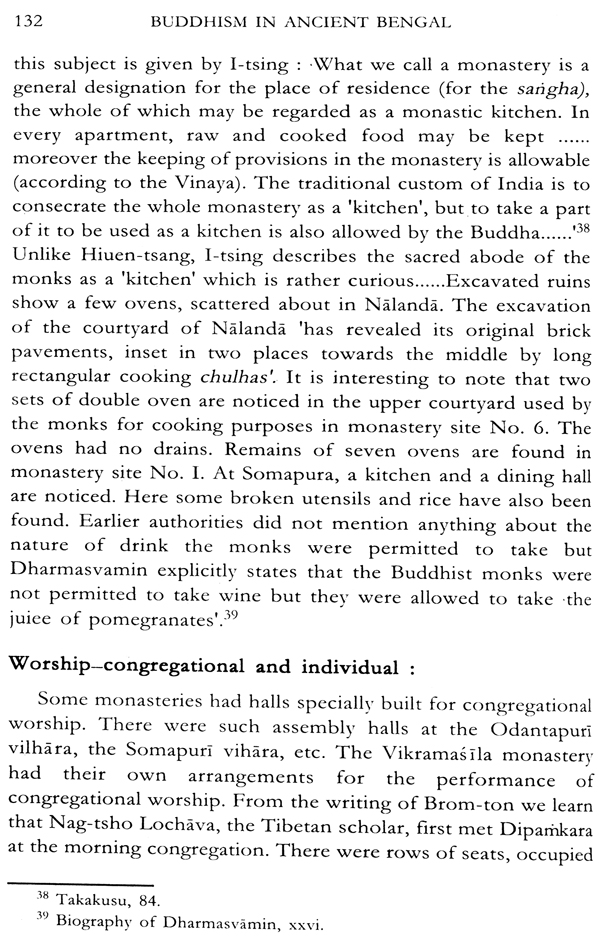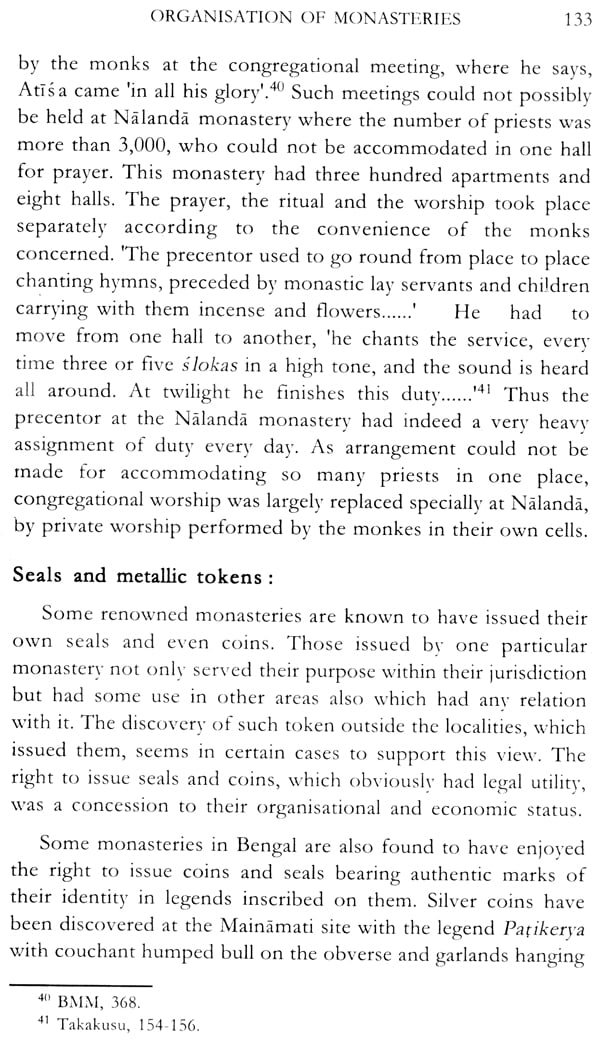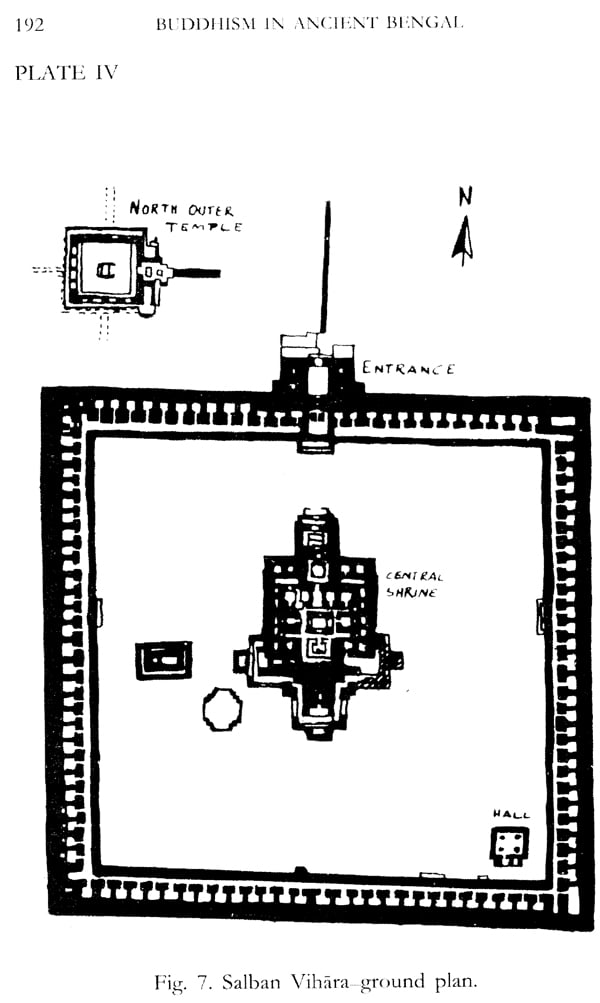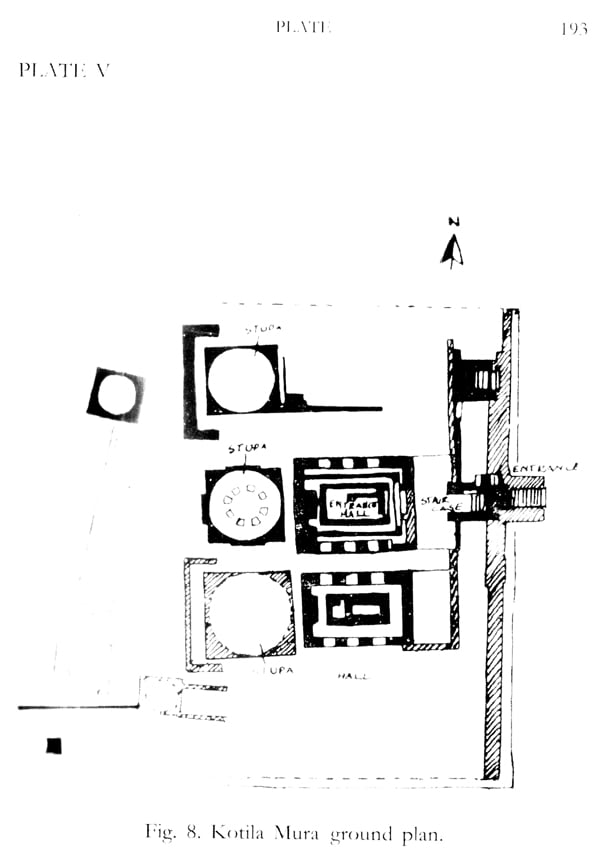
Buddhism in Ancient Bengal
Book Specification
| Item Code: | NAY037 |
| Author: | Puspa Niyogi |
| Publisher: | Maha Bodhi Book Agency |
| Language: | English |
| Edition: | 2016 |
| ISBN: | 9789384721046 |
| Pages: | 224 (14 B/w Illustrations) |
| Cover: | HARDCOVER |
| Other Details | 9.00 X 6.00 inch |
| Weight | 410 gm |
Book Description
Besides the works in English there are also some books written in Bengali by local scholars who contain some very important information’s and many local traditions.
When I was in Bengal I had the privilege of visiting some important places in the Birdman district and admire ruins of old temples. I went as far as Vajrayogini where, among Vaisnava images, 1 traced also statues of Avalokitesvara and Tara; Rampal with the said story of its destruction, still surviving among local people, greatly impressed me; I am not aware of excavations being undertaken there. After partition, important excavations took place in Mainmast and copperplates containing the genealogy of the Chandra dynasty were discovered by the Archaeological Department of Pakistan. It will be very interesting to compare the dates contained in the templates with the literary cycle of the Gopicandra gan.
Prof. yogi is to be congratulated for her undertaking which does not pretend to be a complete study on the political, social and economical life of Bengal; many sources are still missing or unavailable, but there is much to say about social and cultural activities of Bengal chiefly during the most flourishing Buddhist period. The material is here abundant and it mainly consists in the statements of the Chinese and Tibetan sources which Prof. yogi amply uses while studying the administration and organization of the Buddhist Sangharamas, and recording the prominent Buddhist monks living there. What these sources relate is much but, anyhow, inadequate to give us a clear idea of the curriculum of studies in vogue in those establishments which we may call Universities; we can infer that there was a great freedom and that each pupil was free to choose his own master, and the disciplines in which he wanted to specialize. The organization of the Tibetan monasteries . can usefully be compared because the rules concerning the branches of the doctrines to be studied and the method to be followed are, on the whole, very similar.
Prof. Niyogi is well informed and her book may be useful to those who want to be better informed on the political and cultural history of this country. They can learn what has been generally established on solid basis, though many chronological problems need further investigation.
The research has been brought to an end with care and diligence and has the merit of pointing how many blanks are still to be covered.
I should have reserved a greater part to ·the cultural history of Bengal; the early literature like the Dharmamangala and the Goraksavijaya should have been given greater attention and it should have been interesting to discuss why Bengal so greatly contributed to Tantric, which certainly is one of the most important sections of Bengal literature and is now receiving. an in- creasing attention, as it deserves since Tantras often anticipate the theories of Freud and Jung.
Bengal was a country where the Sakta greatly developed and determined the reaction of the Smartas like Raghunath Bhatta- charya.
But Prof. iyogi will certainly discuss with greater details the important points in a second edition of her interesting book.
The reviewer immediately feels that the author is fully competent to analyze the aspects of Buddhism in ancient Bengal. May I suggest that it be accepted as a proof of high scholarly qualification well- suited as a D. Litt."
The first edition of my book on Buddhism in Ancient Bengal published in 1980 has been out of print for many years. There had been a request for the publication of the book from different parts of the world which it was not possible on my part to fulfill for various personal reasons. Sometime last year (2015) Mr. D. L. S. Jayewardene of Maha Bodhi Book Agency decided to publish it.
For Historical reasons this revised monograph does not represent any marked enlargement of the scope covered in the earlier version. As a matter of fact, only few matters on recent archaeological excavation in different parts of Bengal have been incorporated. Special care has been taken to revise the style and improve upon it on a selective principle. In this process all such operations, carried out to an appreciable extent have not, however, led to any basic change of previous view-points or interpretations.
Professor Giuseppe Gucci, I am sorry to state, who is no more in this world to see the second edition, not only took the trouble to persuade this volume but has most graciously recorded his valued opinion in the Foreword, for the first edition.
I acknowledge my debt of gratitude to Mr. D. L. S. J ayawardane of Maha Bodhi Book Agency, Kolkata for his generous offer to publish this edition in the present form. Thanks are due to Mr. Dilip Roy of the Sagarika Press and Mr. Prabhas Bannered, D.T.P. operator for his cooperation in the publication of this book.
Book's Contents and Sample Pages
